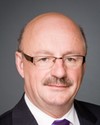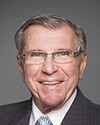Thank you, Mr. Chairman.
I would like to make a few comments before putting my question. I am both disappointed and pleased to learn that, based on their own evaluations, the percentage of Quebec anglophones who say they do not have access to services in their own language is 48 per cent. This percentage is strangely similar to that of the francophone community outside Quebec, which, at the time of the study, was 50 per cent.
Of course, I admit that there are differences, but also similarities, such as when the Jefferey Hale Hospital in Quebec City was closed. I have travelled in certain regions, such as the Gaspé Peninsula and elsewhere in Quebec, and their situation is different from that in Montreal. The communities clearly said this.
As for the number of organizations, this is a choice that the communities have made themselves. I believe there are four networks in Ontario. I am familiar with the one in Eastern Ontario. Four of the 17 networks in Canada, apart from Quebec, are located in Ontario. The one in Eastern Ontario includes over 50 organizations. We have to consider the real numbers when we compare the number of organizations in the English community in Quebec to the number in francophone communities outside Quebec. But I think that on the whole the stories are similar, except that they chose to structure them differently.
As for cooperation between the Société santé en français and the provinces, I admire the work they do. Unless I'm mistaken, a deputy minister of health from New Brunswick was a member of the board, but I don't know if he still is today. This is proof that there was good co-operation among the three parties: the communities, the provinces and the federal government. This should be known.
As for the positive initiatives, I believe that construction has begun on the Centre de santé Saint-Thomas in Edmonton. It will be a magnificent centre which will provide health care services for seniors.
I simply wanted to clarify a few of the things we heard.
I will now briefly come back to the issue of training. In the agreement which was signed in 2004, which transferred 41 billion additional dollars over ten years, there was money to train 1,000 people in ten years so that their credentials could be recognized. Money was also included for people who had trained as doctors abroad and who had come to live in Canada, but who could not work in their profession.
Can you tell us how that aspect of the agreement, which was signed with all the provinces and territories, will be implemented?



